Five finalists have been revealed for the city’s Missing Middle Infill Housing initiative across Lawndale. Split into six clusters/zones of vacant city-owned lots, the initiative looks to subsidize the construction of 99 for-sale homes for the middle class in an area that has long seen rampant disinvestment and 15 percent population loss in the last decade.

View of vacant lot in Lawndale via DPD
The program is being led by the Department of Planning and Development which launched the program after a 2023 design competition by the Architecture Center. The goal is to build community wealth by providing for-sale homes for those that don’t qualify for the affordable housing which has dominated the construction scene in the neighborhood.

Cluster map via DPD
Earlier this month, the DPD revealed the five final developers from a pool of 30 teams that applied. Once fully approved by City Council, the teams will be able to purchase their lots for $1 each with the requirement to build two- to six-unit buildings. The city will also subsidize their construction with up to $150,000 per unit. The teams are as follows in order of their clusters:
Cluster A – Alteza Group LLC – $6.4 Million
The easternmost set of lots, the cluster includes eight different lots which will be turned into two two-flats, five three-flats, and one four-flat. In total there will be 23 units and cost around $278,000 per unit.

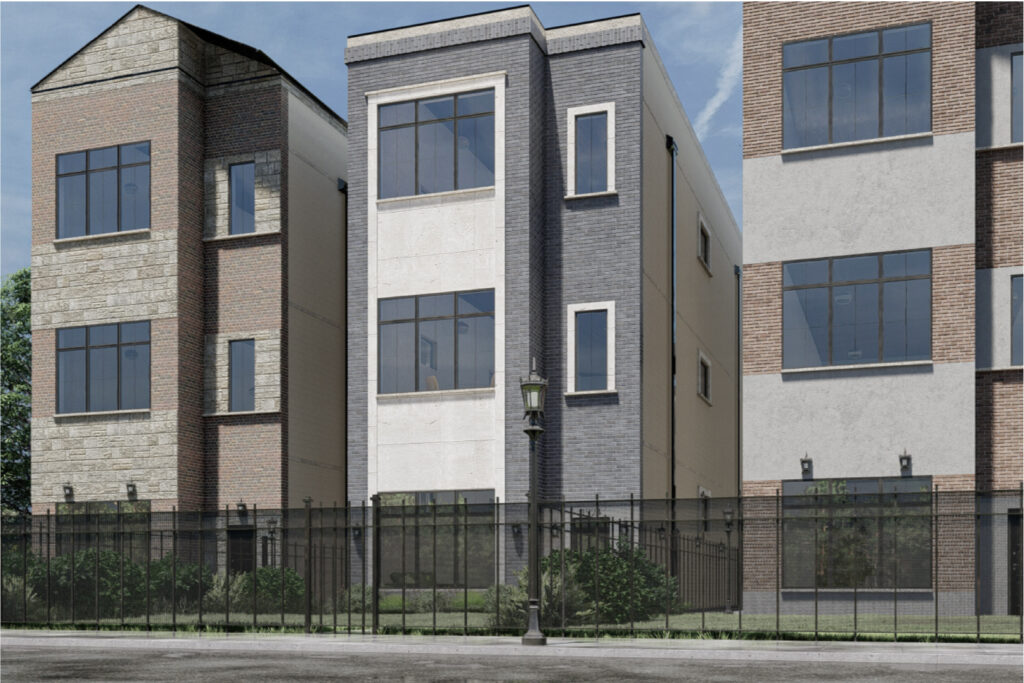
Cluster A rendering via DPD
Cluster B – Unknown/Unwarded

Cluster C – Trumbull Collective – $5.6 Million
A tighter cluster near Ogden Avenue, this one also is made up of eight different lots. These will be converted into eight two-flats with a total of 16 units. The per unit cost will be around $350,000 each.

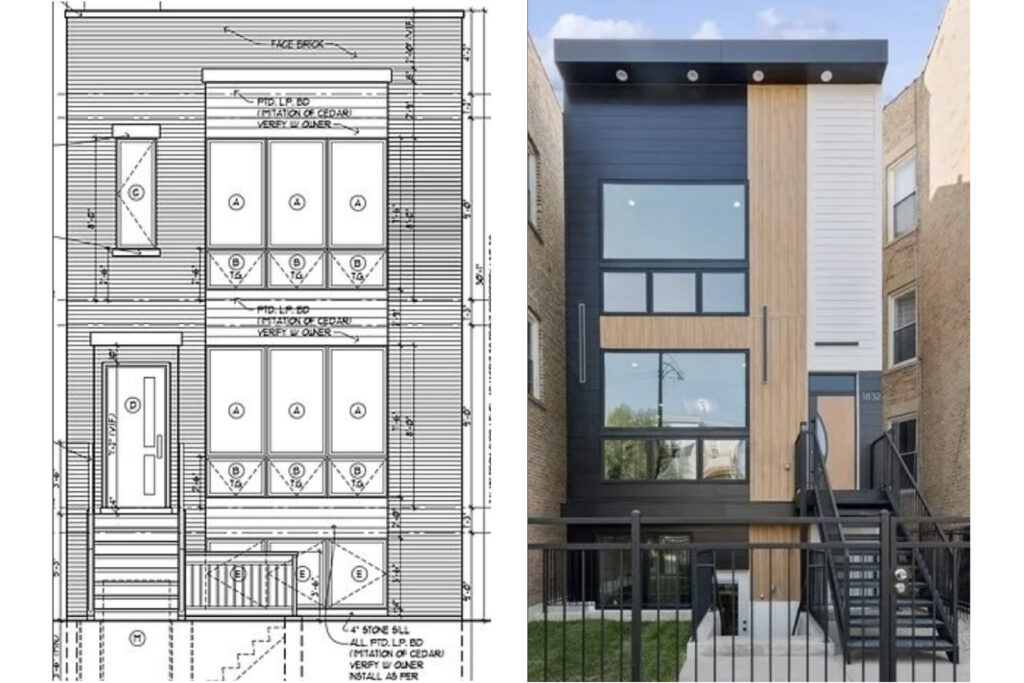
Cluster C rendering via DPD
Cluster D – Citizens Build a Better Community – $5.9 Million
Located around KIPP Ascend Primary, this cluster also contains eight lots. Similar to the previous team, these will also be converted into eight two-flats with 16 units in total. However these are slightly more costly at $369,000 per unit.

Cluster E – Beauty for Ashes Developers LLC – $3.4 Million
The smallest of the bunch and just east of Cluster D, this area includes five lots that will be converted into four two-flats and one three-flat. In total, these will include 11 units in total and cost around $309,000 each.

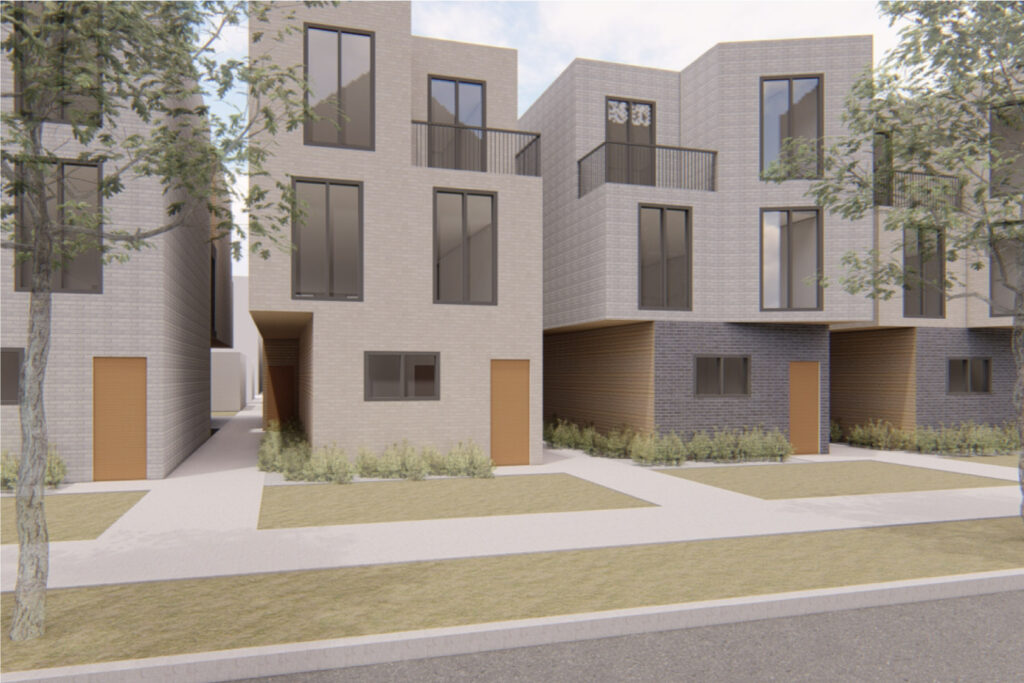
Cluster E rendering via DPD
Cluster F – Sunshine Management – $18 Million
Just east of Cluster E as well, there are seven lots within this group but it will be the densest of the five. The team plans to build five three-flats, two four-flats, and one 10-flat, with 33 units in total. These will cost around $545,000 each unit to build.

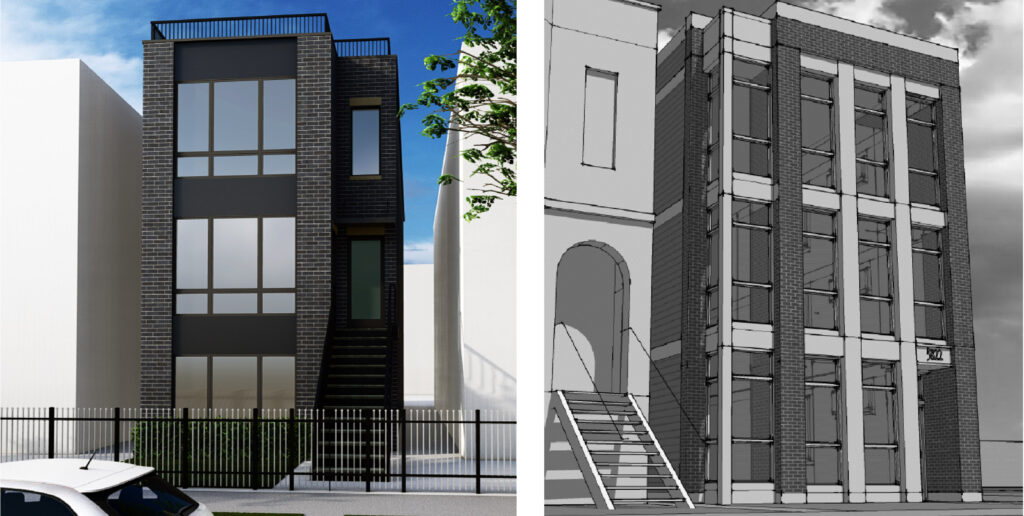
Cluster D (left) – Cluster F (right) renderings via DPD
In total, the five teams will build 99 units with around $14.9 million in city subsidies if fully built out. The department will now present all of the proposals to the local community on February 13. If fully approved, the DPD hopes to see the first groundbreaking in the program later this year.
Subscribe to YIMBY’s daily e-mail
Follow YIMBYgram for real-time photo updates
Like YIMBY on Facebook
Follow YIMBY’s Twitter for the latest in YIMBYnews
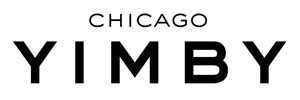
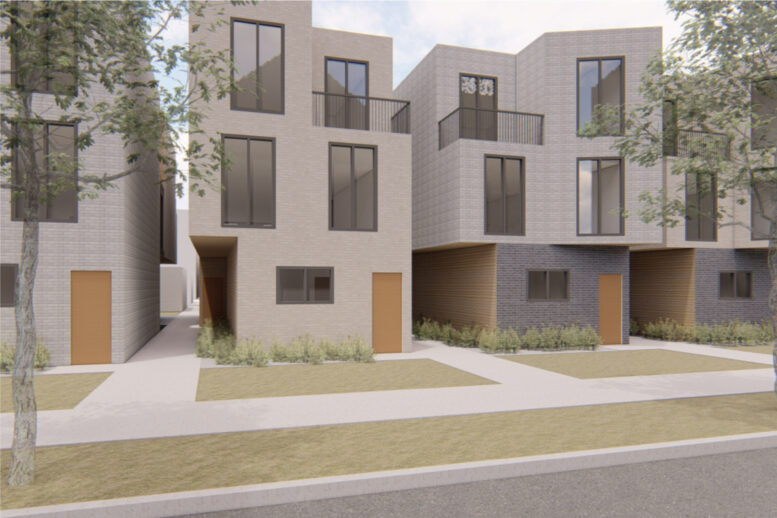
Are these rentals or sales? When the sales are made, will the City recover any of the funds it provided? If rentals, will the City be an equity partner?
These are sales but with deed restrictions that you can only buy and then sell to people that meet a low income threshold. So in terms of building “generational wealth” these programs miss the mark even though they are presented as such.
What’s the basis for the claim that these houses would have such deed restrictions or that the program’s purpose is to build “generational wealth”?
The Missing Middle initiative’s description says completed homes will “be made available at market rates […]” and the Request for Applications states “There are no income limits for home buyers of non-ARO units.”
The program guide explains that if a developer goes the route of seeking City entitlements that subject them to the Affordable Requirements Ordinance (ARO), then the usual affordability conditions would apply, but your comment suggests those restrictions are universal. That seems to misrepresent how the program works and your conclusion/criticism is what appears to miss the mark.
Congratulations on this first cluster Missing Middle Housing Program. We understand Greater Englewood is a scheduled Missing Middle Housing district. We look forward to this opportunity to introduce housing to clusters like the Englewood Nature Trail – Agro-Eco Planning District, our Boulevards system, Englewood Greenline Corridor, Emmett Till Commemoration Road and a host Asset Planning sites.
What the heck is a 10-flat?
An “apartment building”.
This is such a great area geographically, that’s been struck down too many times. It’s so close to downtown. Serviced by multiple L-lines. Contains dozens of beautiful historic buildings. It’s such a shame seeing it in disrepair. So glad to see this surge in development and I hope it brings in new opportunities for the people currently living in the area.
I guess I don’t get it. The developers are getting the land for free ($1 for each parcel). Then, it appears, based on the article, that they are also receiving $150K per unit from the City to help defray what it will cost them to construct the units. So, that means they will receive up to $450K for each 3-flat they build, correct? How much does it cost to build a 3-flat from the ground up in a city where all the infrastructure is already in place (streets/alleys/electricity/water/sewer lines) and most likely all the red tape for permits and other construction issues will be eliminated? Couldn’t be significantly more than $450k, could it? (Brand new 3000 square foot single family homes in some near and far west suburbs are priced to sell at about $200/square foot.) And, then the developer will turn around and sell each property from $309k to $545k per unit? So, after construction on a 3-flat, the total amount the developer would amass from each property would be from over $900k to over $1.6m? Sounds like it is all profit for the developer. They won’t have to spend much of their own money, if any, to build the units and then they walk away with millions once they are sold. Doesn’t seem that there is any risk involved at all for them. Seems to me getting the land for free ($1 for each parcel) is a huge windfall to begin with. Doubt that there would be any issue with selling those units in these areas at such reasonable and below market prices. What am I missing, or is this just a way to pad the pockets of developers who most likely contributed to the election campaigns and/or are friends/family of whomever is pulling the strings/approving these projects? It is difficult not to be cynical about these developments. I am all for the redevelopment of disinvested neighborhoods, but there must be more cost-efficient government-sponsored ways of achieving this goal. Educate me, please, if I am incorrect. Thank you.
(1) yes, it’s there to pad the pockets of politically connected developers. 100%.
(2) Giving away the lots for $1 makes a lot of sense. The city owns them, they’re not producing any tax revenue while consuming city resources (sewers, police protection, roads, etc, etc). Giving them away to someone who puts up a building that goes on to produces several thousand dollars a year of tax revenue is a win, no matter how you look at it.
You say “but those lots are worth way more than $1!” Yeah, show me someone willing to pay more than a dollar for ’em.
Shining example of how our city government has a huge bureaucracy that has be kept busy. So we define a problem “middle class housing” and then set forth goals and objectives, and identify funding sources – TIF money taken from schools and regular government – that will allow the bureaucracy to showcase how it can manage the bejeezus out of such a problem. Then we have a lengthy and complex process that keeps the bureaucrats busy for a good long time, and we announce our exciting conclusion! Then we have to take it to the city council, which has already meddled extensively, and which will require all sorts of appeasement to pass the measures needed to put this complex confection of giveaways and subsidies into motion. Huge checks will be written, people with inside connections will be enriched, and everyone will pat themselves on the back. Aldercreatures will style themselves as saviors of the poor downtrodden middle class.
Meanwhile, the whole thing could have been accomplished by encouraging construction with prompt reviews of plans and zoning that permits these buildings without added requests to alder creatures, zoning review boards and ultimately the city council. None of these projects is lavish or expensive. All could, I bet, be privately financed – that is, financed without taking money from schools or city budgets.
But no, we have a system sucks up huge public resources and allows public actors to take credit. It’s garbage and is holding the city back in big ways.